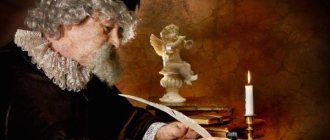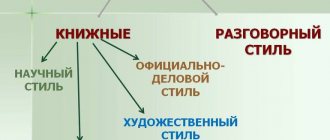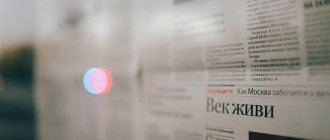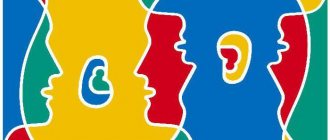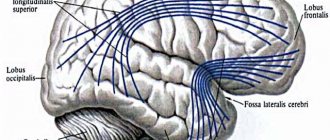| Kind of work: | Essay |
| Date added: | 21.01.2020 |
- This type of work is not a scientific work, it is not a finished final qualifying work!
- This type of work is a finished result of processing, structuring and formatting collected information intended for use as a source of material for independent preparation of educational work.
If you have a hard time understanding this topic, write to me on WhatsApp, we’ll look into your topic, agree on a deadline, and I’ll help you!
If you want to learn how to correctly carry out and write abstracts on any subject, then on the page “what is an abstract and how to do it” I wrote in detail.
Introduction
Depending on the area of application of the language, the content of the utterance, the situation and the goals of communication, several functional-stylistic varieties or styles are distinguished, which are characterized by a certain system of selection and organization of linguistic means in them.
Functional style is a historically established and socially conscious variety of written language (subsystem), which functions in a certain sphere of human activity and communication and is formed by the peculiarities of the use of linguistic means in this sphere and their specific organization.
The classification of styles is based on extralinguistic factors: the scope of language use, the object it defines and the purpose of communication. The areas of language use correspond to those types of human activity that correspond to the forms of social consciousness (science, law, politics, art).
Traditional and socially significant areas of activity are considered: scientific, economic (administrative and legal), socio-political, artistic. Accordingly, the styles of official (book) speech differ: scientific, official and business, journalistic, literary and artistic (artistic). They contrast with the style of informal speech - colloquial and everyday.
The literary and fictional style of speech in this classification stands apart, since the question of the legality of its isolation into a separate functional style has not yet been resolved, since it has sufficiently blurred the boundaries and can use the linguistic means of all other styles. A feature of this style is also the presence of various figurative and expressive means to convey a special quality - imagery.
Artistic styles of speech
Content
1. Introduction………………………………………………………………………. 3
2. Artistic style of speech……………………………………………………5
3. Main features of the artistic style………………………………………….8
5. Stylistic figures and tropes…………………………………………………………….9
4. What is a figure of speech? …………………………………………………………………………16
6. Genres of artistic style………………………………………………………………18
7. Conclusion……………………………………………………………………………………………………………19
8. List of references………………………………………………………20
Introduction
Our speech in an official setting (speech at a scientific conference, at a business meeting, at a meeting of parliamentarians, giving a lecture, a lesson at school) differs from that used in an informal setting (a conversation at a holiday table, a friendly conversation, a dialogue at lunch, dinner at home ).
Depending on the goals and objectives that are set and solved in the process of communication, various linguistic means are selected. As a result, varieties of a single literary language are created, called functional styles.
The term functional style emphasizes that varieties of literary language are distinguished on the basis of the function (role) that the language performs in each specific case.
Typically the following functional styles are distinguished:
1) scientific;
2) officially - business;
3) newspaper - journalistic;
4) artistic;
5) conversational.
The styles of a literary language are first of all compared on the basis of an analysis of their lexical composition, since it is in the vocabulary that the difference between them is most noticeable.
The assignment of words to a certain style of speech is explained by the fact that the lexical meaning of many words, in addition to the subject-logical content, also includes an emotional-stylistic connotation.
The language of fiction, despite the stylistic heterogeneity, despite the fact that the author’s individuality is clearly manifested in it, is still distinguished by a number of specific features that make it possible to differentiate
read artistic speech from any other style.
The features of the language of fiction as a whole are determined by several factors. It is characterized by broad metaphoricality, imagery of linguistic units of almost all levels, the use of synonyms of all types, polysemy, and different stylistic layers of vocabulary is observed. The artistic style (compared to other functional styles) has its own laws of word perception. The meaning of a word is largely determined by the author’s goal setting, genre and compositional features of the work of art of which this word is an element: firstly, in the context of a given literary work it can acquire artistic ambiguity not recorded in dictionaries; secondly, it retains its connection with the ideological and aesthetic system of this work and is assessed by us as beautiful or ugly, sublime or base, tragic or comic:
The use of linguistic means in fiction is ultimately subordinated to the author's intention, the content of the work, the creation of an image and the impact through it on the addressee. Writers in their works proceed, first of all, from accurately conveying thoughts and feelings, truthfully revealing the spiritual world of the hero, and realistically recreating language and image. Not only the normative facts of language, but also deviations from general literary norms are subject to the author’s intention and the desire for artistic truth.
The breadth of literary speech covering the means of the national language is so great that it allows us to affirm the idea of the fundamental potential possibility of including all existing linguistic means (though connected in a certain way) into the style of fiction.
The listed facts indicate that the style of fiction has a number of features that allow it to take its own special place in the system of functional styles of the Russian language.
Let's look at the artistic style of speech in more detail.
Artistic style of speech
Artistic style is a functional style of speech that is used in fiction. This style affects the imagination and feelings of the reader, conveys the thoughts and feelings of the author, uses all the richness of vocabulary, the possibilities of different styles, and is characterized by imagery and emotionality of speech.
In a work of art, a word not only carries certain information, but also serves to have an aesthetic impact on the reader with the help of artistic images. The brighter and more truthful the image, the stronger its impact on the reader.
The artistic style is used in fiction, which performs a figurative-cognitive and ideological-aesthetic function. The artistic style of speech is characterized by attention to the particular and random, followed by the typical and general. Let us remember “Dead Souls” by N.V. Gogol, where each of the shown landowners personified certain specific human qualities, expressed a certain type, and all together they were the “face” of the author’s contemporary Russia. The world of fiction is a “recreated” world; the reality depicted is, to a certain extent, the author’s fiction, which means that in the artistic style of speech the subjective element plays the most important role. The entire surrounding reality is presented through the author's vision. But in a literary text we see not only the world of the writer, but also the writer in this world: his preferences, condemnations, admiration, rejection, etc. This is associated with emotionality and expressiveness, metaphor, and meaningful diversity of the artistic style of speech. The lexical composition in the artistic style of speech has its own characteristics. The number of words that form the basis and create the imagery of this style includes figurative means of the Russian literary language, as well as words that realize their meaning in the context. These are words with a wide range of usage. Highly specialized words are used to a small extent, only to create artistic authenticity when describing certain aspects of life. In the artistic style of speech, the verbal polysemy of a word is very widely used, revealing meanings and shades of meaning in it, as well as synonymy at all linguistic levels, thanks to which it becomes possible to emphasize the subtlest shades of meaning. This is explained by the fact that the author strives to use all the riches of the language, to create his own unique language and style, to create a bright, expressive, figurative text. The author uses not only the vocabulary of the codified literary language, but also a variety of figurative means from colloquial speech and vernacular. The emotionality and expressiveness of the image come to the fore in a literary text. Many words, which in scientific speech appear as clearly defined abstract concepts, in newspaper and journalistic speech - as socially generalized concepts, in artistic speech carry concrete sensory ideas. Thus, the styles are complementary to each other. For example, the adjective “lead” in scientific speech realizes its direct meaning - “lead ore”, “lead bullet”, in artistic speech it forms an expressive metaphor - “lead clouds”, “lead night”. Therefore, in artistic speech an important role is played by phrases that create a kind of figurative representation. Artistic speech, especially poetic speech, is characterized by inversion, i.e. changing the usual order of words in a sentence in order to enhance the semantic significance of the word or give the entire phrase a special stylistic coloring.
In works of artistic style, speech is widely represented
- tropes, that is, figurative and expressive means of language;
- lexical means of expression: dialectisms, historicisms, vernaculars, synonyms, antonyms; expressive vocabulary, etc.;
- syntactic means: inversion, parcellation, non-union, etc.;
- words and forms of other styles of speech (colloquial, journalistic, business, etc.)
Creating works of artistic style requires the author to carefully select linguistic means, as well as their masterful use when recreating the internal state of characters, when describing scenes, and tracing the connection of a particular episode with other fragments of the work. The stylistic features of artistic texts are inextricably linked with the philosophical and aesthetic views of the writer, with his attitude to the world.
Main features of the artistic style
The main features of the artistic style are:
- expressiveness;
-imagery;
-emotionality;
- aesthetics.
A text in this style affects the imagination and feelings of the reader, conveys the thoughts and feelings of the author, uses all the richness of vocabulary, the possibilities of different styles, and is characterized by imagery, emotionality, and specificity of speech. The emotionality of an artistic style differs significantly from the emotionality of colloquial and journalistic styles. The emotionality of artistic speech performs an aesthetic function. Artistic style presupposes a preliminary selection of linguistic means; All language means are used to create images. A distinctive feature of the artistic style of speech can be called the use of special figures of speech, the so-called artistic tropes, which add color to the narrative and the power of depicting reality. The function of the message is combined with the function of aesthetic impact, the presence of imagery, a combination of the most diverse means of language, both general linguistic and individual author's, but the basis of this style is general literary language means. Characteristic features: the presence of homogeneous members of the sentence, complex sentences; epithets, comparisons, rich vocabulary.
Stylistic figures and tropes
TRAILS (Greek tropos - turn, figure of speech) - words or figures of speech in a figurative, allegorical meaning.
STYLISTIC FIGURES - figures of speech used to enhance the expressiveness of a statement: anaphora, epiphora, ellipse, antithesis, parallelism, gradation, inversion, chiasmus, etc.
Metaphor – (translated from Greek means “transfer”). This refers to the transfer of a name from one object to another. For such a transfer to occur, these objects must have some similarity, they must be somewhat similar, adjacent. A metaphor is a word or expression that is used in a figurative meaning based on the similarity of two objects or phenomena for some reason.
Metonymy is a type of metaphor. The Greek word "metonymy" means renaming, that is, giving one thing the name of another. This is the replacement of one word with another based on the contiguity of two objects, concepts, etc. Metonymy is the imposition of one feature on another, the imposition of a figurative meaning on a direct one. For example: 1. The village smokes gray smoke into the cold clear sky - people are warming up. (V.M. Shukshin) (Instead: stove pipes are smoked). 2. The city was noisy, flags were crackling, wet roses were falling from the bowls of flower girls, horses decorated with colorful feathers were jumping, and carousels were spinning. (Y.K. Olesha) (People living in the city were noisy). 3. I ate three plates. (I ate soup in bowls). All these transfers of meanings and their mixing are possible because objects that have the same name are located nearby, that is, they are adjacent. This may be contiguity in space, time, etc. Such transfers of names are called metonymic. Synecdoche. The Greek word synecdoche means correlation. Synecdoche is a type of metonymy. Transfer of meaning occurs when the lesser is called instead of the greater; more instead of less; part instead of whole; whole instead of part. Epithet. This word translated from Greek means “appendix, attached,” that is, one word is attached to another. An epithet is a trope, figure, figurative definition, word or phrase that defines a person, object, phenomenon or action from the subjective position of the author. Differs from the simple definition in artistic expressiveness. In folklore, constant epithets are used as a means of typification and one of the main means of its artistic expression. Tropes, in the strict sense of this term, include only epithets, the function of which is performed by words used figuratively, in contrast to exact epithets expressed by words used in the literal meaning (beautiful flowers, red berries). The creation of figurative epithets is associated with the use of words in a figurative meaning. Epithets expressed in words that have figurative meanings are called metaphorical. The basis of the epithet may be a metonymic transfer of the name (...we will go to break the wall, we will stand with our heads for our homeland. M.Yu. Lermontov). Contrasting epithets that form combinations of words with opposite meanings with the defined nouns are called Oxymorons. (“...joyful sadness, hating love.” I.B. Golub). Comparison is a trope in which the characteristics of one object are given by comparing it with another object. Comparison is a trope that consists of comparing objects by their similarity, which can be obvious or distant and unexpected. Usually comparison is expressed using the words “as if”, “exactly”, “as if”, “similar”. There may be comparisons in the instrumental case. Personification is a type of metaphor, the assignment of properties of living beings to objects of inanimate nature. Often, personification is created by referring to natural phenomena as living and conscious beings. Personification is also called the transfer of human properties to animals. Hyperbole is one of the expressive means of speech, meaning “exaggeration”. Hyperbole is a figure with the meaning of excessively exaggerating what is being said. Litota - translated from Greek this word means “simplicity”. If hyperbole is an excessive exaggeration of something, then the reverse hyperbole means the same excessive understatement. Litotes is a figure that consists of excessive understatement of what is being said. (A little man the size of a fingernail. A boy the size of a thumb. Thumbelina. Quieter than water, lower than the grass. “You have to bow your head below a thin piece of grass” (N.A. Nekrasov). Expressive means of speech are humor, irony, sarcasm, grotesque. Humor is one of the expressive means of vocabulary, humor translated from English means disposition, mood. Entire works can be written in a comic, comic-pathetic, allegorical way. They show a good-natured, mocking attitude towards something. Remember the story by A.P. Chekhov " Chameleon". Many of I. Krylov’s fables are written in this vein. Irony is translated from Greek as “pretense”, “mockery”, when one thing is stated in words, but in the subtext something completely different is meant, the opposite of the expressed thought. Sarcasm - in translation from Greek means “tearing meat." Sarcasm is a caustic mockery, evil irony, caustic, caustic remarks. A comic effect is created, but at the same time an ideological and emotional assessment is clearly felt. The fantastic is connected with the real, the ordinary with the everyday. One of the varieties of painting - caricatures can be with humor, with irony, with sarcasm and with grotesque. Grotesque means “bizarre”, “intricate”. This artistic technique consists of violating the proportion of depicted objects, phenomena, and events. Many of M.E. Saltykov-Shchedrin’s works are constructed using these expressive means of speech (“The History of a City,” “The Golovlev Gentlemen.” Fairy Tales). The stories of N.N. Gogol and A.P. Chekhov are full of humor, irony, sarcasm, and grotesque. The work of J. Swift (“Gulliver’s Travels”) is also grotesque in its content. Remember the stories of A.P. Chekhov “Chameleon”, “Thick and Thin”, “Man in a Case”. Grotesque was used by M.E. Saltykov-Shchedrin to create the image of Judas in the novel “The Golovlevs.” Sarcasm and irony in the satirical poems of V. Mayakovsky. The works of Kozma Prutkov, Zoshchenko, and Vasily Shukshin are full of humor. Such expressive means of word formation as paronyms and paronomas are used by satirists and humorists. Puns are created by playing on words.
Puns are figures based on the sound similarity of words or combinations of words that are completely different in meaning. Puns are a play on words based on polysemy and homonymy. Puns make jokes. Puns can be found in the works of V. Mayakovsky, in his satirical poems, in Kozma Prutkov, Omar Khayyam, A.P. Chekhov.
Epiphora is the repetition of words or expressions at the end of a sentence.
Parallelism - identical construction of sentences;
Allusion - Stylistic figure - allusion (“The Glory of Herostratus”). Alogism - A deliberate violation of logical connections in speech for the purpose of stylistic effect (“I will never forget whether it happened or not, this evening”). Amplification - A stylistic figure consisting of stringing together synonymous definitions and comparisons in order to enhance the expressiveness of the statement (“He takes it like a bomb, takes it like a hedgehog, like a double-edged razor”). Anadiplosis - Repeating the final consonance, word or phrase at the beginning of the next phrase or poetic line (“Oh, spring, without end and without end, Without end and without end dream!”). Anakoluf - Syntactic inconsistency of parts of a sentence as an unconscious violation of a linguistic norm or as a conscious stylistic device (“And the animals from the forests come running to see how the ocean will be and how hot it is to burn,” “I am ashamed, like an honest officer”).
Anaphora - Repetition of the initial parts of adjacent sections of speech (“The city is lush, the city is poor...”, “I swear by the odd and even, I swear by the sword and the right battle”). Antithesis - a comparison or opposition of contrasting concepts, positions, images (“I am a king, I am a slave, I am a worm, I am god!”, “A rich man fell in love with a poor woman, a scientist fell in love with a stupid woman, a ruddy woman fell in love with a pale woman, a good man fell in love with a harmful woman) ").
Antonomasia - The use of one’s own name to designate a person endowed with the properties of a famous bearer of this name (“Don Juan” meaning “seeker of love adventures”, “I eluded the aesculapian (i.e., the doctor) Thin, shaved, but alive”). Non-union (asyndeton) - the construction of a sentence in which homogeneous members or parts of a complex sentence are connected without the help of conjunctions (“I came, I saw, I conquered”). Hyperbaton is a stylistic figure that consists of changing the natural order of words and separating them from each other with inserted words (“Only the languid Muses are delighted”). Gradation is a consistent intensification or, conversely, weakening of the power of homogeneous expressive means of artistic speech (“I don’t regret, I don’t call, I don’t cry...”). Isocolon is a stylistic figure consisting in complete syntactic parallelism of neighboring sentences (“He listens to the whistle with his accustomed ear, He stains the sheet with one spirit”). Inversion is a change in the usual order of words and phrases that make up a sentence (see hyperbaton and chiasmus.
Essay winter
Winter is the coldest season of the year, a time of blizzards and severe frosts. But despite this, for many people it is their favorite time of year. Winter is a time of holidays and fun.
In winter, people celebrate Catholic Christmas, New Year, Orthodox Christmas, Old New Year, Valentine's Day, February 23. And that’s why winter brings joy to many people.
How are children looking forward to winter? You can go sledding, skiing, ice skating, play snowballs, and make a snow woman. Each season is interesting in its own way.
Winter is also a very beautiful time of year. She simply fascinates with her beauty. You go out into the street in the morning, and everything glitters there, shimmering with millions of diamonds. All the trees are sparkling. Towards evening, when the sun slowly sinks below the horizon, a play of colors begins. The snow turns orange, then pink, and the frost on the trees begins to shimmer with all the colors of the rainbow.
2 pages, 772 words
Based on Shishkin’s painting “Winter”
... experience the beauty of living nature. Essay based on Shishkin’s painting “Winter” The brilliant Russian artist I. Shishkin was able to create a beautiful picture only from trees and snow. The painting depicts a majestic dense forest...
After the sun set, the moon began to rise, illuminating everything around with a silver light. And the snow began to glisten again. Cold stars light up in the sky one after another. How beautiful it is all around! Like in a fairy tale! And you look at all this beauty with bated breath, as if you were afraid to destroy this winter fairy tale. Yes, every season is amazing and unique in its own way.
Essay about winter
Winter will come soon. Her appearance is felt more and more every day. It's getting cooler every day...
The sky is falling lower and lower, and the trees have almost completely lost their leaves and stand almost bare. Only green grass is still visible here and there. Birds have moved south, and flocks of them can often be seen. Everyone is waiting for her approach.
You are about to feel the breath of winter on your face and your cheeks will be pricked by snowflakes falling from above... The first snow melts very quickly, almost immediately. After a while there will be a lot of snow and it will be possible to play cutting games and take the children on a sled.
It's time to prepare warm clothes - hats, scarves, boots.
You can also take out your skates, because now it’s time to skate on them.
Let the white snow shine, covering everything around with a soft, fluffy blanket. Let the blizzard howl, promising wind and snowdrifts. All this will happen in the near future. And we will begin to think about how the New Year will come and what it will bring with it, we will prepare gifts. Let's prepare a green, fragrant Christmas tree and toys to decorate it for the holiday. And soon Maslenitsa will come, delighting you with delicious pancakes... And then spring is just around the corner!
5 pages, 2142 words
Creating an individual entrepreneur in five days, step-by-step instructions - Chapter Three, 3
However, some of the listed documents may not be needed; the final list of required documents is determined by the specific bank, taking into account the credit transaction: application for a loan; questionnaires of the borrower and guarantors; copies of passports (all pages) of the borrower and guarantors; for those registered in marriage, a certified copy of the marriage contract, a copy of the spouse’s passport (all...
Essays on the theme Winter
Winter is a wonderful time. Soft, fluffy snow is falling from the sky in large flakes. All the streets are covered in snowdrifts. Houses, trees - everything is covered with a thick layer of snow.
It seems to me that only Russian winter is truly beautiful. She seemed to have stepped out of a holiday card drawn by a talented artist. Only the Russian winter can boast not only of its cold weather, but also of its fabulous beauty.
However, I love winter not only for its beautiful nature. In winter we can ski, skate, and sled. All parks are crowded with people. Queues line up at the ticket office for the ice slides, skating rink, and ski slopes. In winter everything becomes fabulous. I really like to walk with friends and play snowballs. Sometimes we build a snowman, snow woman or Santa Claus and Snow Maiden. Only winter presents us with so many different activities. In winter, you don’t want to sit at home, you want to walk, frolic, and have fun.
Moreover, winter is the main holiday, New Year! Both adults and children look forward to this day. People decorate the Christmas tree, light the lights, decorate their houses, shops, schools, and parks. Everyone buys gifts for each other. This is a truly magical winter mood!
This is why I love winter so much. Even though this is the coldest time of the year, it is still the best and most beautiful.
Online store offers
Examples of similar educational works
Essay on a memorable day of spring break
... cars Essay on the topic Memorable day of the summer holidays Summer is my favorite time of the year. Because every day of the summer holidays is filled with vivid impressions, new events, and interesting acquaintances. Essay on the topic Summer holidays This is...
Four examples of the essay “One day in my life”
... notebooks for essays in beautiful handwriting on the topic: “One day in my life.” At home she ... a day in her life, then it takes place in virtual space. “One day in my life” “One day in my life” (story) The bell rings, and the class is not yet ready for the lesson: alone...
Abstract essay congratulations on mother's holiday
... There is one minute left until the end of the lesson. And today I will read your works to your mothers... first. - Women's Day! March 8! A holiday for all women! - Tomorrow is the International... mother’s lunch: “I like that she feeds me deliciously and makes compote.” Composition …
The essay this day appeared by chance in the cloudy autumn
... earth. (31) I really didn’t want this day to end. (32) - Why do you have to die? - ... the hat fell silent. (27) Fear appeared on his face. (28) He knew what... music school. (6) It’s hard for me among my classmates. (7) The guys treat me like...
One of the students from the land of liars wrote an essay on a summer day
... student of 11-A class Levkulich Oleg. I am the heir to a great country. I am proud of my country, that ... for the summer holidays ... I could not even imagine that all this could collapse in one ... this competition, writing about Lugansk ... specifying that one of the main ... the day when ...
